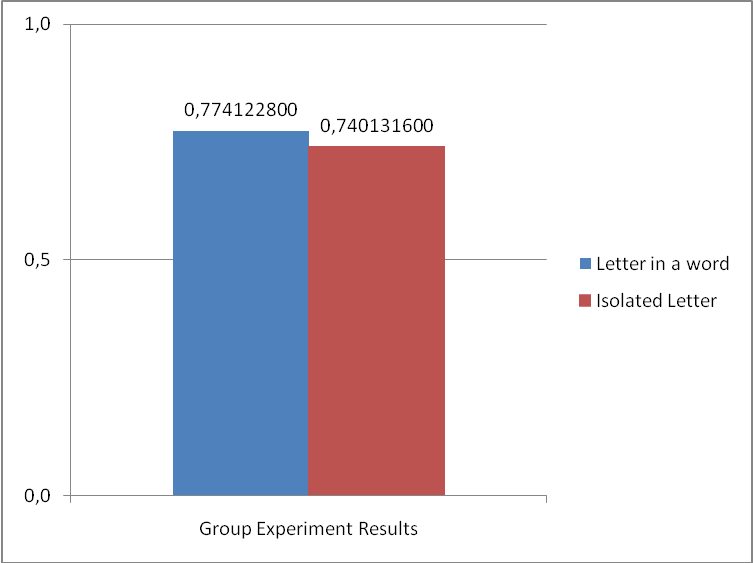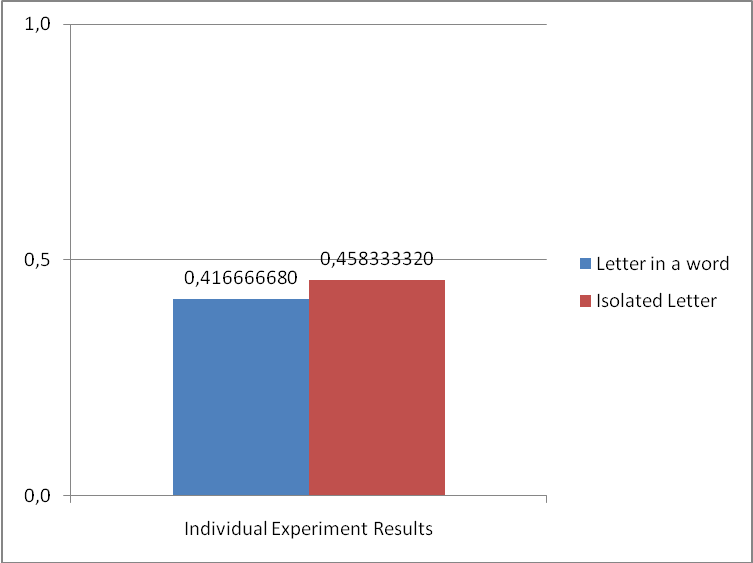Introduction
The Word Superiority Effect is a cognitive phenomenon that demonstrates the effect of context. The word superiority effect demonstrates the ability of people to detect letters within a familiar context better than unfamiliar. Specifically, when in a word, letters are recognized more accurately than in a meaningless word or isolated letter. This report analyzes an experiment that uses the concept of the word superiority effect, to test its hypothesis.
Methodology
The experiment consists of a word or a single letter, which will be demonstrated for the participants on screen for a brief period (40 milliseconds). The aforementioned screen will be replaced with another one, where a mask of Xs and Os will appear for half a second, after which a prompt will be shown reporting the position of a letter in a masked word. The participants will be asked to choose between two letters for the reported position. The experiment consists of 96 trials, consisting of 16 four letters words and 16 isolated letters, each repeated three times. The dependent variable will be the demonstrated first screen, being a word or a letter. Accordingly, the dependant variable is the percentage of correct detections of the letter in the prompted position.
Thus, the hypothesis of this experiment states that due to the letter being within the context of a word, it is easier to detect the correct letter. In other words, the percentage of correct detection should be higher for trials in which a word appeared rather than a single letter. Accordingly the percentage of correct detections will be lower for trails where in which a single letter appeared.
Summary
There were a total of 19 participants in this experiment, with the results clearly showing the word superiority effect. The percentage of the correct detections when the target letter was in a word context was approximately 77.4%, whereas the percentage for cases, where the letter was in isolation was approximately 74.01%. (Fig. 1) On the other hand, the individual experiment showed opposite results, where the percentage of correct detection of a letter in a word was approximate, 41.6%, while the percentage for isolated letters was approximately 45.8%.(Fig. 2) In the case of the individual experiment, it can be seen that the result are close to %50, and thus implying that the letters were guessed most of the time.
Thus, it can be concluded that the word superiority effect took place in a group experiment, while the individual experiment results imply that there is no positive correlation between the variables, when the strategy taken is based on guessing.

